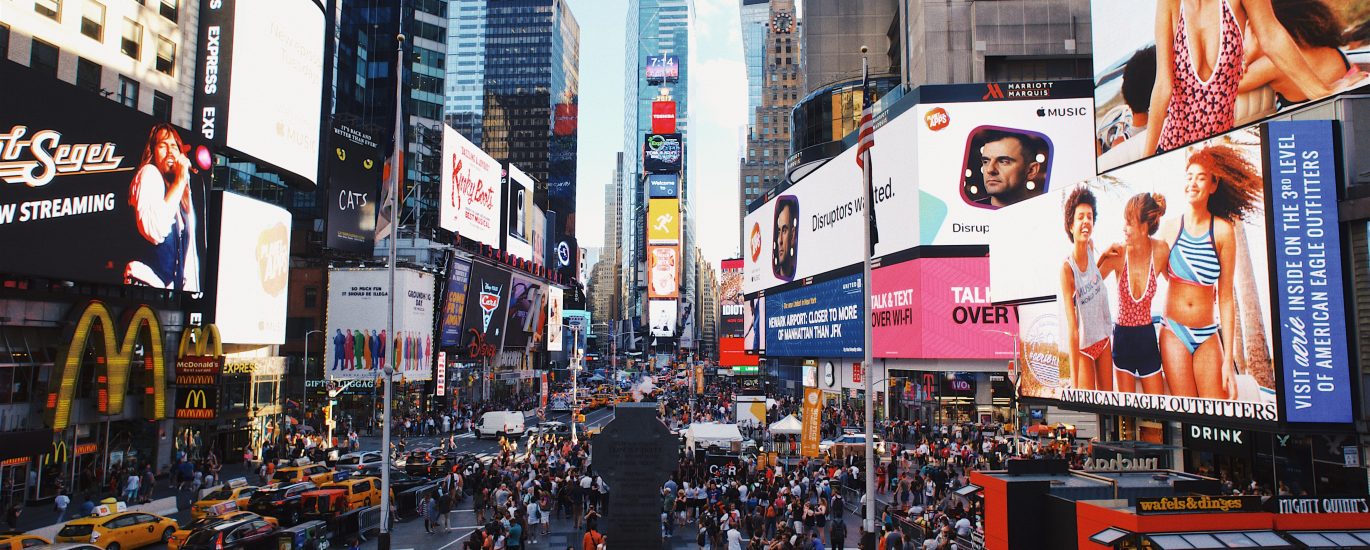Doesn’t matter where you are at, talks about an impending recession may be unavoidable, and during a downturn, advertising budgets are usually the first to go for most businesses. After all, it’s basic corporate instinct to preserve the bottom line and cut back on seemingly fewer essential activities like brand awareness campaigns, splashy commercial spots or sponsored posts on social media.
In fact, the World Economic Forum reports that year-on-year advertising revenue in the first quarter of 2020 declined 15 per cent in China, and 9 per cent on average in European countries.
However, historical data suggests that slashing this expense may not necessarily be the best move for businesses, as brands that maintained or grew their ad spending during economic downturns were able to take advantage and grow their sales and market share significantly. And as much as it sounds like a savvy sales pitch by ad agencies hungry for new accounts, upping your ad spend when your competitors go quiet is a clever move for boosting market share — not to mention increasing your return on investment when advertising costs might be lower due to a lack of demand.
For instance, during the Great Depression, cereal brand Post cut back on ad spend in the United States, while rival Kellogg doubled its advertising budget. The result: the latter usurped Post as the leader of the ready-to-eat cereal category and maintained that lead for decades afterwards.
Today, companies have access to far more sophisticated tools for data collection and analysis, which help make their ad spend much more targeted, responsive, and effective.
However, data alone is not a silver bullet. Many factors come into play when deciding how to utilise advertising resources during these uncertain times, and companies need to look at the big picture when deciding on their strategy.
So how should companies approach advertising in the age of COVID-19 and beyond? Here are three factors to consider.
What is the goal?
Stronger brands most likely have a deeper well of financial resources to draw from during tough times. If such businesses have long-term brand-building as their goal, then they should capitalise on the free market during downturns.
“We live in an attention economy now where the advertising space is very cluttered and consumer attention is very precious,” says Prof Chang. “If companies can maintain or increase advertising when their competitors cannot afford to do so, they will be getting a larger share of consumer attention.”
With fewer bidders competing for ad slots, advertising is also cheaper. Meanwhile, the tools of programmatic advertising now enable advertisers to reach more precise demographics across digital media, the category that has seen an explosion of user growth during this stay-home pandemic.
“For companies with the resources and long-term vision, it’s a very good time for improving your positioning in the market,” says Prof Chang.
What is the nature of the business?
Unfortunately, there are some types of businesses that will probably not see any immediate improvements to their bottom line no matter how much they lavish on advertising right now. So it’s also important to be realistic. “Take cruise companies as an example. This is really not a good time to advertise new cruise travel packages,” Prof Chang points out.
On the other hand, that does not mean that other ways of keeping one’s brand top of mind for consumers should not be explored, even for beleaguered industries. Take Singapore Airlines. With much of its fleet grounded due to severe travel restrictions worldwide, the company redeployed its cabin crew as “care ambassadors” in public hospitals.
“That was a brilliant way of cutting through the clutter to convey the message that this is a company that is doing its part for the community,” says Prof Chang.
At the other end of the spectrum, with brick-and-mortar retailers severely constrained by COVID-19 safety precautions especially during the Circuit Breaker period for Singapore, online retailers such as Redmart and Lazada are already top of mind for many consumers. Instead of advertising, such companies would do well to concentrate on improving their supply chains and distribution channels.
“With a sudden surge in sales, they need to make sure they can deliver,” Prof Chang advises. “For such companies, the inability to scale up their logistics is what is actually going to hurt these brands.”
The takeaway: all decisions taken during this time can have the potential to build one’s brand; advertising is just one tool in your toolbox, and it may not always be the best tool to deploy.
How is data being collected and used?
Ask Prof Chang for examples of companies using data well and using data badly, and she cites the same company — Facebook. “It really knows its consumers well because of all their activity on this platform, and that means it can help advertisers tailor their strategies and personalise their offerings. So, given a fixed ad budget, advertisers can get more for their buck,” she notes.
On the other hand, this same access to such granular data has also been a real double-edged sword for companies like Facebook. Most notably, the extraction of vast amounts of private user data for political purposes uncovered in the Cambridge Analytica scandal permanently altered public perceptions of the company. “Whether such breaches were intentional or not, ultimately the damage was still done,” says Prof Chang.
Some companies are already taking action to show its commitment to more ethical data practices. For instance, the New York Times has announced it will no longer use third-party data (collected from consumers on other websites) to target ads in 2021, as such data is not considered privacy friendly.
“Companies need to be very cognisant of the downside of the improved capabilities of data collection and analysis systems,” says Prof Chang. “More consumers and governments are becoming aware of the potential negative repercussions of these technologies, and consumer protection in this area will become more important.”






